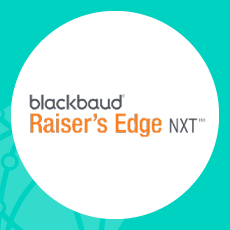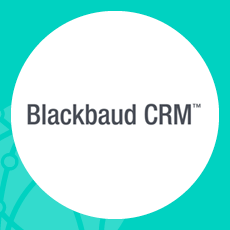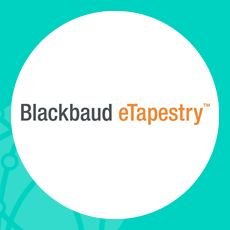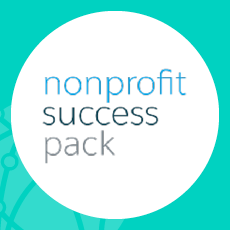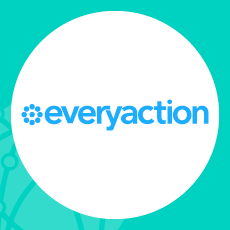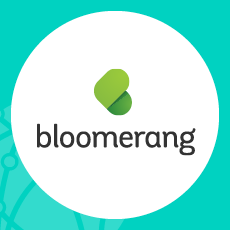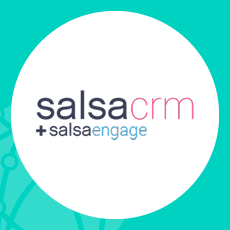
Your nonprofit’s constituent relationship management (CRM) software contains one of your organization’s greatest assets— your data. It’s crucial that you choose the right CRM solution for your nonprofit, but that can be significantly more difficult when there are multiple strong contenders on the market to choose between.
At DNL OmniMedia, we partner with a number of top names in the nonprofit CRM sphere, providing technology consulting services to nonprofits that use those solutions. We’ve created this guide to nonprofit CRM options, through which you’ll review the basics of CRM software and a side-by-side comparison of the top solutions through the following points:
- Overview of CRM for Nonprofits
- Nonprofit CRM Comparison: Top 7 Solutions
- Choosing the Best Nonprofit CRM for Your Organization
Investing in a new CRM is a costly decision, from the migration of all of your nonprofit’s data to the training needed to familiarize your team with the new solution. Carefully research the top solutions on the market to ensure that when you purchase your new CRM, you can continue using that solution sustainably as your nonprofit grows.
Each solution discussed in this guide is known as a leader in the CRM sphere, featuring robust functionality and a positive reputation for improving nonprofit operations. However, subtle differences may make one solution a better fit for your nonprofit than another.
But, before we discuss these specifics, let’s first review the essential features of constituent relationship management for nonprofits.

Overview of CRM for Nonprofits
Constituent relationship management (CRM) refers to the various processes that nonprofits use to steward and build relationships with donors, volunteers, advocates, members, and other constituents to secure ongoing support. CRM software is the central database used to store information on each nonprofit supporter, including all of the touchpoints and interactions with each individual.
Equipped with supporter profiles and a log of all interactions, your nonprofit can craft a strategic plan for stewarding its audience members toward a desired next step– such as making a larger donation or signing up to attend an upcoming event.
What does a CRM do for nonprofits?
CRM software equips nonprofits with a plethora of tools to help them better connect with supporters of all kinds. Depending on the solution, features may include:
- Reporting automation. Rather than tasking a team member with manually pulling daily, weekly, or monthly reports, your CRM will generate these documents and send them directly to the team members who need to access and analyze them.
- Donor management. This includes maintaining donor profiles (demographic information, contact information, preferences, etc.) as well as keeping an in-depth log of all past interactions with that supporter, whether it’s communications, donations made, or events attended.
- Fundraising campaign management. This includes tracking all planning efforts for fundraising campaigns, as well as the progression toward fundraising goals throughout the campaign itself.
- Internal operations management. You can create different workspaces for individual team members and entire teams, so staff members only access the information that’s useful to them. You can also track team members’ efforts to ensure everyone is on track to meet their fundraising or stewardship goals for the time period.
- Marketing campaign management. This includes automating communications such as email, tracking responses or lack thereof, and discovering which marketing strategies best serve your audience to optimize your efforts accordingly.
Beyond built-in tools, there are a variety of CRM features that improve supporter relationship management by adding efficiency to your nonprofit’s efforts overall. For example, CRM software that features customization capabilities allows you to build reports focusing on the specific data points that are most useful to your efforts. In addition, software with intuitive navigation allows members of your team to save time troubleshooting any challenges.
Lastly, many robust CRMs include integrations with the systems already in your technology lineup– such as your marketing software, website, or online donation tool. This allows you to transfer between the systems seamlessly, so your team can view a full picture of every interaction with supporters from within your CRM itself.

Nonprofit CRM Comparison: Top 7 Solutions
The following seven solutions are regularly recommended as stand-out nonprofit CRM options. Review this side-by-side comparison to understand the unique differences between each solution to discover which would best suit your nonprofit’s fundraising and supporter stewardship efforts.
Blackbaud’s Raiser’s Edge NXT
The first of three Blackbaud solutions on this list, Blackbaud’s Raiser’s Edge NXT (RE NXT), is a robust fundraising and CRM system for mid-sized to large nonprofit organizations. A revitalization of its predecessor, Blackbaud’s Raiser’s Edge, RE NXT features a variety of improvements, including a refreshed user interface, greater data security, and improved customer support.
Raiser’s Edge NXT was created to be useful for nonprofits immediately, with robust features available out-of-the-box:
- Donor management features such as constituent profiles, donor segmentation, and built-in smart recommendations to cultivate support.
- Fundraising features such as tools to plan and launch campaigns, manage a variety of gift types (e.g., recurring gifts, planned gifts, and tributes), and process donations.
- Marketing tools such as dynamic email campaigns, shareable online donation forms, and direct mail campaigns.
- Reporting and analytics functionality includes tracking key metrics and creating custom reports with advanced data visualization capabilities.
Due to the extensive functionality of RE NXT, it’s unlikely to be in the price range of small or newly formed nonprofit organizations that are investing in their first CRM solutions. However, mid-sized to large organizations that are ready to scale up their efforts are comfortably within the customer base for this solution.
In Summary: Raiser’s Edge NXT is best suited for mid-sized to large nonprofits that are seeking robust fundraising and donor management features out-of-the-box. It is best for organizations that have active, but relatively straightforward, fundraising and stewardship efforts. While it can be customized, it was largely built to be used as-is.
Bonus! Team DNL regularly works with nonprofit organizations to configure their RE NXT instances to meet their exact needs. We’ve written a comprehensive guide to Raiser’s Edge NXT that covers the key features of the solution and which organizations are most likely to benefit from using it.
Blackbaud CRM
Blackbaud CRM is the provider’s largest-scale solution, created for large to enterprise-sized organizations that have more complex data management needs. The defining feature of this solution is how extensively it can be customized, allowing you to track donor circumstances, fundraising campaigns, and marketing efforts as they uniquely exist within your organization.
Beyond the ability to mold the solution to fit your organization’s needs, Blackbaud CRM has the following stand-out features:
- Analytics features powered by the solution’s native prospect research tool, ResearchPoint, allowing you to create custom models, and benchmarks to identify opportunities, evaluate your strategies, and discover new supporters using the Nonprofit Cooperative Database.
- Marketing tools that empower multichannel campaigns, allow you to integrate CRM data with your marketing strategy, and grow your website with a comprehensive, built-in content management system.
- Relationship management features that allow you to understand the relationships between various supporters and partners, coordinate multiple fundraising teams, and access key information via mobile devices for fundraisers on the go.
Because of the robust built-in features and extensive customization capabilities, Blackbaud CRM is most likely to be in-budget for well-established, large and enterprise nonprofit organizations. You’ll also need to budget for nonprofit technology consulting and team training to ensure your nonprofit is making most of the CRM.
In Summary: Blackbaud CRM is best suited for large and enterprise-sized organizations with extensive, multi-dimensional datasets. This solution stands out for its customization capabilities, and working with a nonprofit technology consultant is key to configuring the solution to align with your nonprofit’s unique needs.
Blackbaud’s eTapestry
Unlike the previous two Blackbaud solutions, eTapestry is the perfect fit for smaller and growing nonprofit organizations. eTapestry is a cloud-based solution with straightforward fundraising and relationship management features that are designed to be highly user-friendly.
While eTapestry is significantly less customizable than the other Blackbaud solutions on this list, it comes equipped with all of the essential fundraising functionality:
- Data management features such as the Data Health Scorecard allowing you to identify and resolve data hygiene challenges; built-in NCOALink services to keep supporter contact information up-to-date.
- Fundraising management features enable you to view all donor data directly in the main dashboard –rather than specific reports –and analyze the engagement of new, upgraded, downgraded, or unchanged donors over time.
- Online engagement features such as embedded online donation forms, ready-made email templates, online event invitations, ticket sales, and membership program management.
Budget-wise, eTapestry is likely to be within reach for smaller and growing nonprofit organizations. Additionally, because the solution doesn’t have extensive customization capabilities, any technology consulting fees are likely to be on the lower end of the spectrum.
In Summary: Blackbaud’s eTapestry is the ideal solution for growing nonprofits that don’t have the budget for Raiser’s Edge NXT or Blackbaud CRM, but still want to access the benefits of working with the provider. With effective fundraising and relationship management features, this CRM has everything a newer organization needs, without overwhelming it with functionality that it may not need just yet.
Salesforce’s Nonprofit Success Pack
Salesforce has been a well-known provider of enterprise-sized for-profit CRM software for decades. More recently, they released the Nonprofit Success Pack (NPSP), which configures the provider’s main Salesforce Platform Enterprise or Ultimate Editions to be useful for nonprofit use. Essentially, it’s a series of packages that, when overlaid on the main Salesforce CRM, allow organizations to understand the relationships between supporters, manage campaigns and programs, and oversee nonprofit-specific efforts such as grant usage.
Nonprofits using NPSP can expand its functionality with apps and overlays available through the Salesforce AppExchange. However, when it comes to the solution’s baseline functionality, organizations immediately access:
- Donor and volunteer management features empower users to create in-depth supporter profiles, track gift types, create engagement plan templates, and track volunteers’ onboarding and ongoing engagement.
- Grant management tools let your staff create accounts for individual grantmakers, track deliverables needed to secure a grant, manage any payment schedules, and ensure funds are allocated accordingly.
- Campaign management features empower you to track progress toward an overall fundraising goal (such as your annual fund) as well as progression toward individual initiatives within that campaign (like specific events or donation appeals).
- Program management features that are accessible via the Program Management Module provide your team with a 30,000 ft. status view on various mission-related activities and easy reporting on those activities to donors and executive decision-makers.
- Reporting and analytics features include many common nonprofit reports and dashboards, as well as custom report types and dashboard starters that are available through the Salesforce and Tableau integration.
While Salesforce is created for enterprise-sized organizations, the provider allows nonprofits to access 10 free licenses of NPSP before purchasing additional licenses as needed. This means that small nonprofits with fewer than 10 employees can actually use NPSP with great success. Beyond those initial 10 licenses, NPSP is most likely to be in-budget for large to enterprise-sized organizations.
In Summary: Salesforce’s NPSP is accessible for both new organizations and large to enterprise-sized organizations that are looking for comprehensive data management tools. Because it’s a robust solution and can be enhanced with a variety of apps and overlays, it’s best for nonprofits that are comfortable with a longer implementation timeline and looking for a major change to their software lineup.
EveryAction
While EveryAction is a CRM solution that can support a variety of standard nonprofit activities such as fundraising and donor management, it truly shines when it comes to digital outreach and advocacy activities. It’s a malleable solution with a variety of built-in integrations (most notably, with social networking platforms), so it can drastically simplify your nonprofit’s outreach efforts both on and offline.
EveryAction contains robust functionality out-of-the-box:
- Fundraising tools include offline tools (moves management, predictive modeling, donor segmentation, etc.) and online tools (one-click donations, peer-to-peer fundraising, etc.)
- Advocacy capabilities include click-to-call, one-click petitions, social advocacy, an Elected Officials Lookup tool, and a mobile canvassing platform.
- Digital marketing features that empower omnichannel campaigns, include email marketing, text message marketing, and mobile-responsive websites.
- Volunteer and member management tools include volunteer profiles, supporter segmentation, sign-ups and scheduling, and automated communications.
- Event management features allow your nonprofit and your supporters to host events with multiple ticketing options and virtual capabilities.
Regarding pricing, EveryAction starts at $109 per month for the unified CRM package. However, because it is a highly customizable solution, the true pricing for EveryAction can vary from organization to organization, depending on sizing and particular needs. You’ll also want to factor in the cost of nonprofit technology consulting, as you’ll want to work with a partner to customize the solution to your nonprofit’s liking.
In Summary: EveryAction is best suited for mid-sized to large nonprofit organizations that have a strong focus on advocacy activities. While this solution will support your fundraising, event, and supporter engagement efforts, its advocacy tools are what make it stand out in the list.
Bloomerang
Bloomerang is a nonprofit CRM that’s focused on decreasing attrition and retaining more donors over time. Many of Bloomerang’s core features aim to help your nonprofit understand which donors are highly engaged, which aren’t, and what you can do to elevate the latter to more closely match the former.
Bloomerang offers the following core features:
- An interactive dashboard that shows a nonprofit’s donor retention rate and suggestions to elevate it.
- A giving summary, including engagement level and Generosity Score, for each supporter to understand their current engagement with the nonprofit.
- Constituent timelines to understand all past communications with each supporter.
- Smart reports that allow nonprofits to create meaningful reports in a straightforward manner.
- Outreach tools including email and direct mail design, website integrations, and contact data hygiene efforts (like nightly NCOA updates).
Bloomerang is available in five pricing tiers, ranging from $99 per month to $499 per month. These pricing tiers largely correlate to the size of the nonprofit itself, whether it is managing 0 – 1,000 records or 25,000 to 40,000 records. With this in mind, the full functionality of Bloomerang is likely to be in range for nonprofits of many sizes.
In Summary: Bloomerang is an affordable solution for smaller, growing nonprofits to larger operations. It’s billed as a full-functionality solution and is equipped with a variety of donor management features to help your nonprofit increase retention. With that in mind, it’s better suited for nonprofits with more straightforward data management needs, rather than those seeking the full customization capabilities of some of the earlier providers on this list.
SalsaCRM + SalsaEngage
SalsaLabs provides a CRM and donor engagement tools in one solution with SalsaCRM + SalsaEngage. This solution is meant to help nonprofits not only manage existing relationships, but also grow their supporter bases using the provider’s SmartEngagement Technology. Essentially, SalsaLabs has created a hybrid CRM and marketing solution to do so.
SalsaCRM + SalsaEngage comes equipped with the following stand-out features:
- Donor management features include rich donor profiles, next suggested gift calculations, customizable reports and dashboards, and supporter segmentations.
- Digital marketing features include automated email series, an email designer, social media management, and text message marketing.
- Online fundraising tools include a visual form designer with ready-made templates, machine learning-driven smart asks for the optimal donation solicitation, peer-to-peer fundraising capabilities, and integrated payment processing.
- Advocacy tools such as automated advocacy campaigns, online petitions and targeted actions, and provided lists for federal, state, and local representatives.
SalsaLabs’ solution is best suited for mid-sized nonprofit organizations that have fairly straightforward fundraising and donor stewardship efforts. Similar to Bloomerang, SalsaCRM + SalsaEngage is a less customizable solution, so any technology consulting fees are likely to be less expensive compared to a fully customizable option.
In Summary: SalsaCRM + SalsaEngage is the ideal solution for mid-sized nonprofit organizations that are looking to prioritize marketing efforts. As a CRM with built-in, focused marketing tools, it allows you to not only maintain current supporter relationships, but attract new support to continue growing your audience.

Choosing the Best Nonprofit CRM for Your Organization
Aim to choose the solution that best fits your nonprofit’s unique needs and budget. All of the solutions on this list are impactful solutions, so you can’t go wrong with one over the other. Choose the one that best aligns with your particular fundraising and donor stewardship goals.
Here are a few tips to help you decipher which solution will work best for your nonprofit:
- Start with a list of features that you’re seeking, and compare each provider against that list.
- Consider the level of support and training that the provider offers nonprofits such as yours.
- Request a demo of the solution to test it out prior to investing.
And last but certainly not least, work with a consultant when making your decision. A nonprofit technology consultant will be able to:
- Create an initial list of the top solutions on the market that align with your nonprofit’s needs.
- Assess your technology lineup and evaluate which solutions will integrate with other software that your nonprofit is using to ensure all technology is compatible.
- Consider your future goals to ensure the solution you invest in is aligned with your aspirations and growth in mind.
- Manage the implementation of your new CRM, including everything from data migration to team training.
For example, you can work with a team such as DNL OmniMedia, which has experience helping mid-sized to large nonprofits (minimum budget of $15,000) choose and implement CRM software that can grow as their nonprofit does. To learn more, contact our team today.
Investing in a new CRM is a crucial decision, as the solution you choose can impact your nonprofit’s fundraising, donor stewardship, and growth for years to come. With so many high-quality solutions on the market, it’s understandable if you struggle to choose the right one.
Consider working with a nonprofit technology consultant to narrow down the ideal nonprofit CRM for your organization’s unique needs and budget. In the meantime, explore the following additional nonprofit CRM resources:
- CRM Software: The Guide to Blackbaud Solutions. Want a more in-depth look at the various nonprofit CRM solutions offered by Blackbaud? Review this side-by-side comparison of Blackbaud’s Raiser’s Edge NXT, Blackbaud CRM, and eTapestry.
- Salesforce Nonprofit Success Pack: The Comprehensive Guide. If you’re considering Salesforce’s NPSP as your next CRM, review this in-depth guide to the solution.
- EveryAction Guide. EveryAction stands out for its advocacy-focused features, but that’s not the only reason the solution shines. Read about the ins and outs of EveryAction in this guide.


